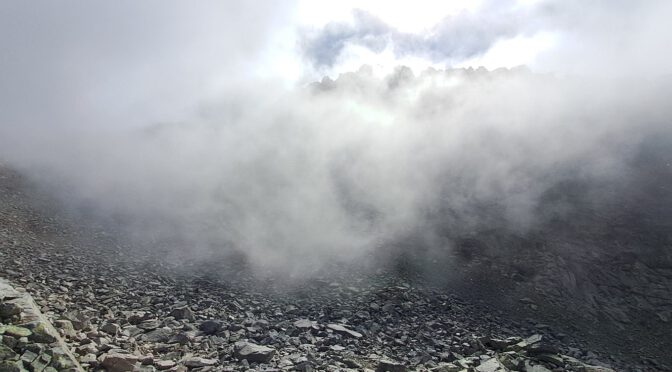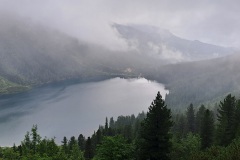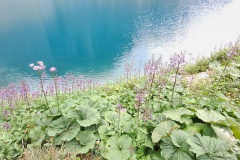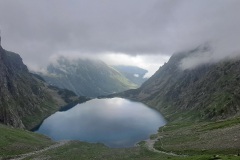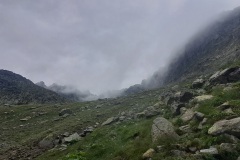The High Tatras are a small mountain range by comparison, so crossing them in their entirety from North to South or vice versa is, logistically and in terms of personal endurance, really straightforward.
As the mountain range (Polish: Tatry Wysokie, Slovak: Vysoké Tatry) separates Poland and Slovakia, you’ll also enter the frontier area between these countries at one of the mountain saddles such as Poľský hrebeň, or on peaks such as Świnica which straddle the border.
This implies some peculiarities like having to use different currencies in the mountain huts, hearing a related yet different Slavic language, using different forms of transport when moving around in valleys and settlements (narrow-gauge railway on the Slovak, horse-drawn carriages on the Polish side), and, in addition, to see porters on the Slovak but not on the Polish high altitude trails (the “Slovak Sherpas”).
An obvious choice to traverse the border is Rysy, the highest mountain in Poland and also the highest mountain in the High Tatras you can visit on an official and marked tourist trail.
Important to add here is, that the ascent (or descent, respectively) from the Slovak side is much easier and suitable for beginners, what the ascent from the Polish side is not1.
Our plan for the last days of July was to make a hiking tour from Morskie Oko in Poland to Popradské pleso in Slovakia by crossing the popular peak, and also to make a detour to Vysoká (Polish: Wysoka), a close-by mountain I had already visited a month earlier, in case the weather allowed for it.
July 29
Though the forecasts had given us slightly contradictory information and we’d reckoned to get wet, we were lucky with the weather and there was no rain, yet on the other hand we had almost no views past the 2000 meters mark.
But it was much less crowded than usual on the trails and on the peaks themselves, so we were able to push forward really quickly and we did not have to wait in queues at any point during our ascent.
We rescheduled climbing up to Vysoká to the next day for the rocks were slippery and wet, we considered it not worth the risk to proceed.Also because orientation was difficult, pushing forward to the 2547 meters peak would have been unwise. Instead we descended on direct way from sedlo Váha, that lies about one hundred and fifty meters beneath Rysy, to Popradské pleso where we were going to spend the night.
Ironically, weather improved significantly as we got down what gave us a false sense what to expect the following day.
July 30
To our dismay, it was raining the entire morning as we once more covered the distance between Popradské pleso and Chata pod Rysmi.
The view was almost at zero, so there wasn’t much point in taking photos either. And scaling Vysoká was even more risky than the day before, as we soon found out at sedlo Váha.
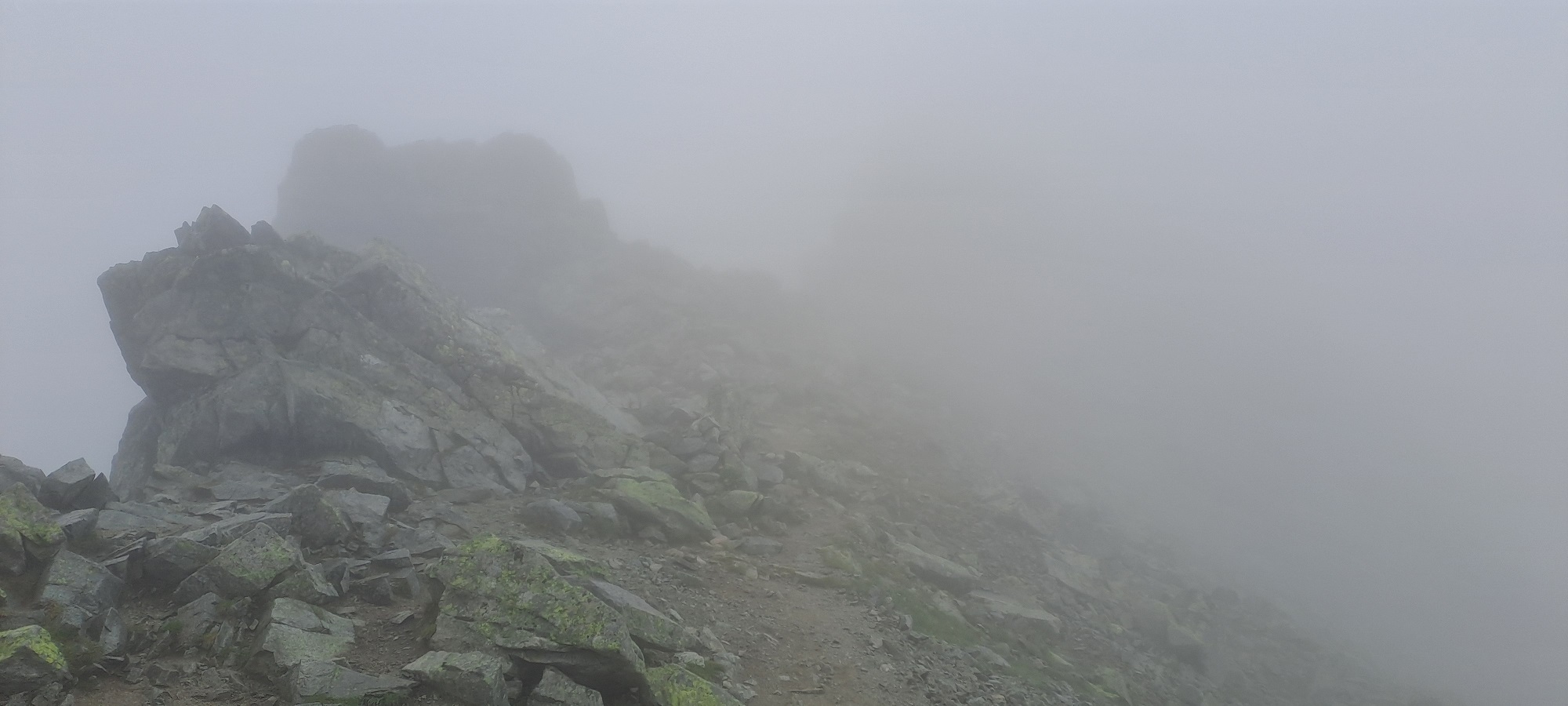
So there were no options left but to abandon this particular enterprise, for now at least.
But that is just part of the game of mountaineering.
Disappointment soon faded, and we enjoyed the rest of our day in the splendid High Tatras mountain range while we were making our way back to Poland.
Footnotes
1 one thing to keep in mind however is, that on the Slovak side there is a winter closure from November to May, while the Polish side is accessible all year round
